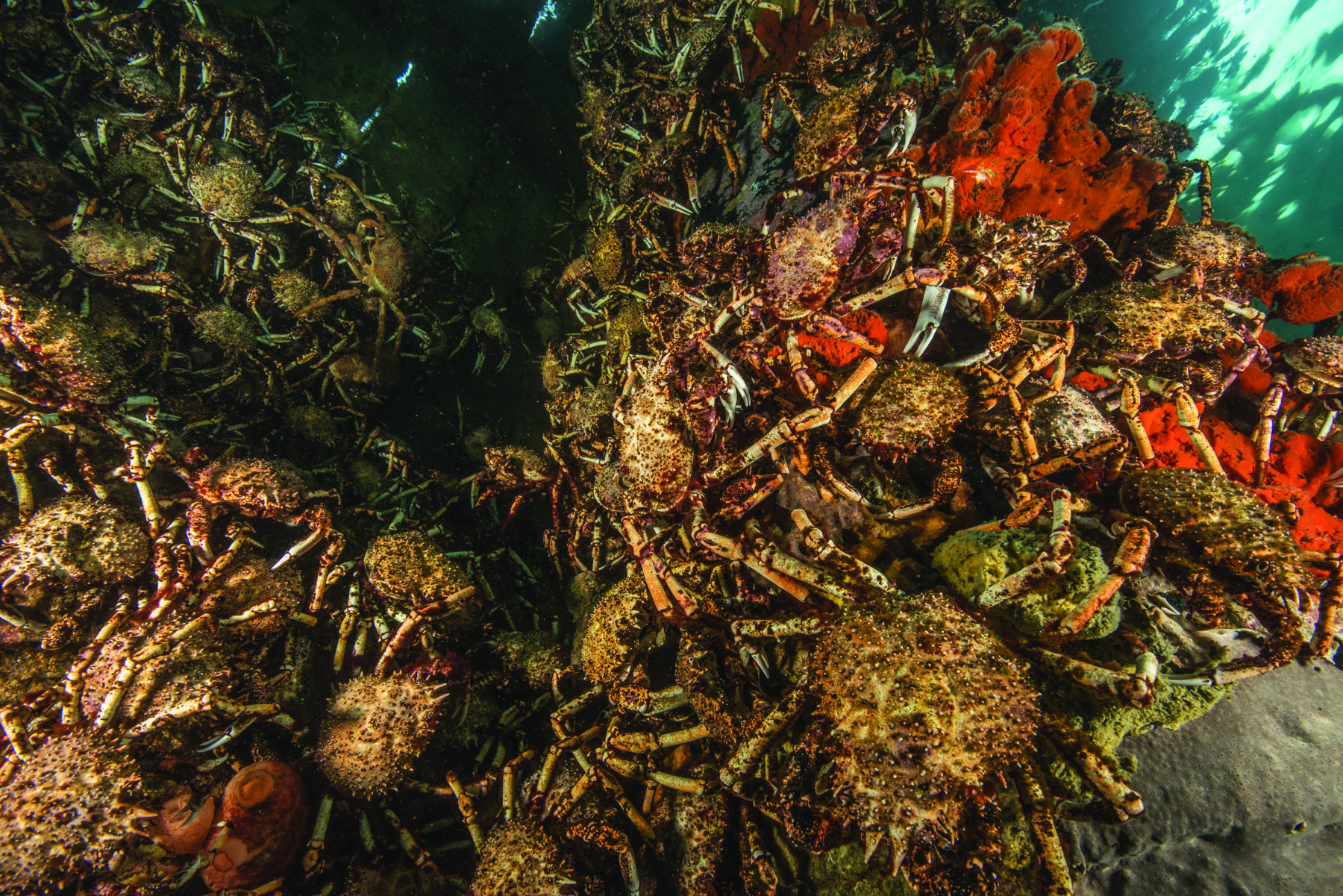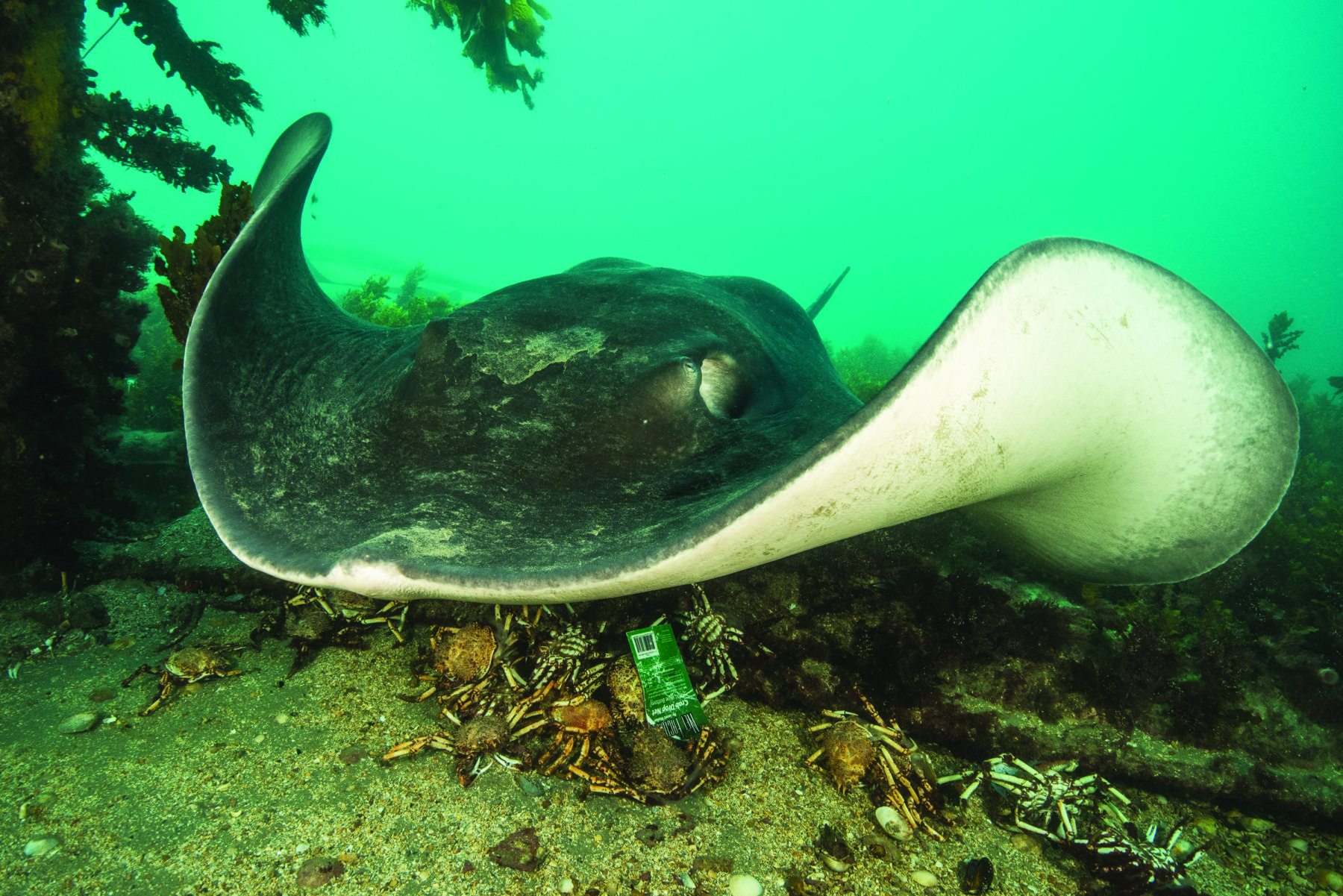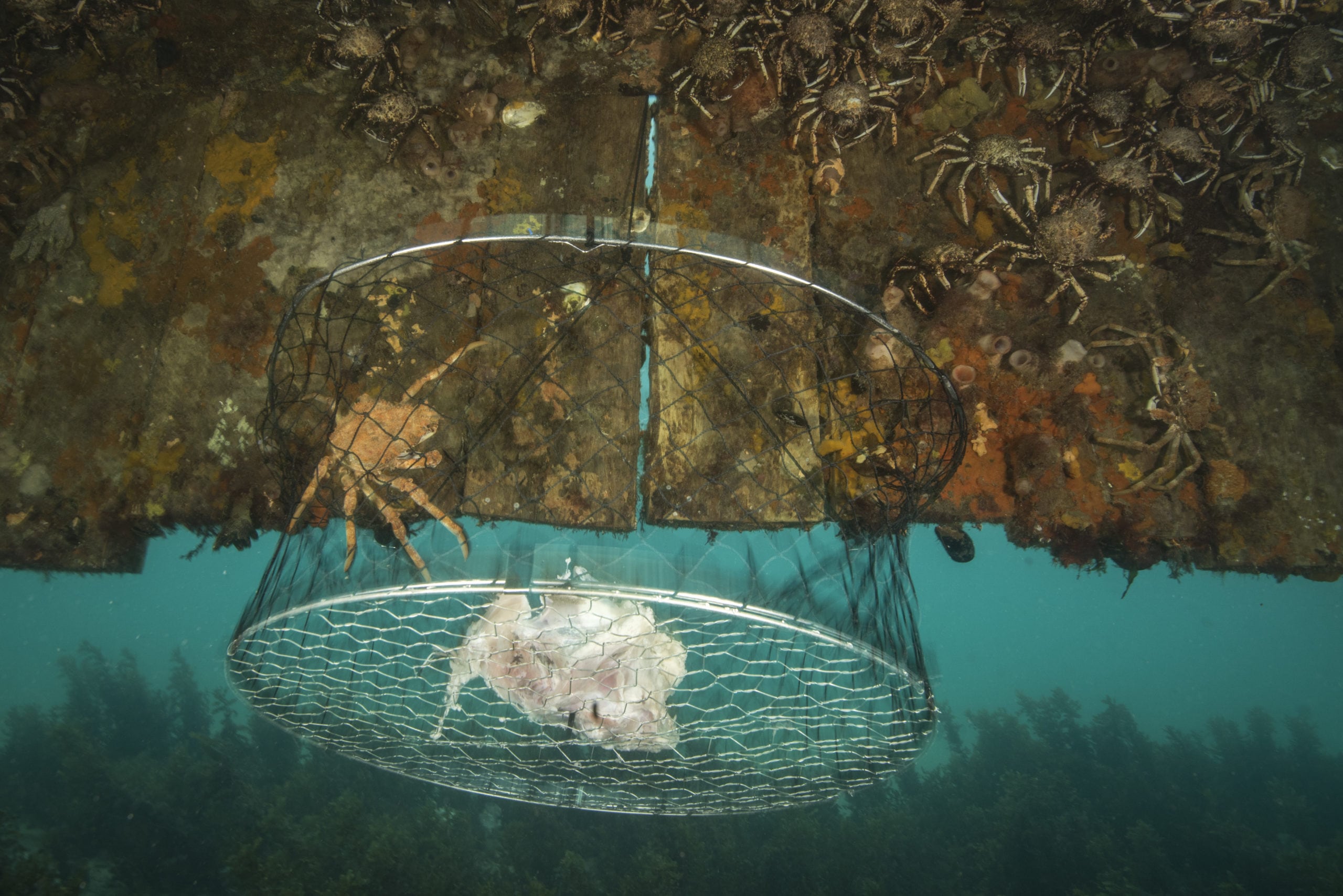A SINGLE GIANT SPIDER CRAB can be hard to see. It barely exceeds 15cm across, despite its common name, and its triangular upper shell is covered in spines, hairs and knobs that make it blend into an ocean floor background. It will even make itself more inconspicuous by placing living sponges, hydroids and algae onto its shell from the surrounding temperate reef environment where it lives. But when this species comes together en masse, in aggregations that can exceed 50,000 individuals, it’s difficult to miss.

This footage was featured in the Magical Land of Oz now available to watch on Netflix.
Spider crabs converge like this at several locations in Australia – including in South Australia and Tasmania – but no aggregation is as predictable or easily accessible as that in Port Phillip. The timing of this great assembly usually occurs between late May and June, and relates to lunar cycles when the water temperature is a fresh 11–15°C.
Sprawling across 1930sq.km with a depth of up to 24m, Port Phillip contains some of Victoria’s most important types of marine environment. Vast areas of undulating sand, thriving seagrass meadows and distinct areas of rocky reef create complex habitats that are home to a huge diversity of marine wildlife, including weedy seadragons, brightly coloured nudibranchs, pot-bellied seahorses and giant cuttlefish. During its annual pilgrimage, the armoured brigade of giant spider crabs moves with purpose through these habitats scavenging what food it can, often leaving barren surfaces in its wake.
It commands attention as it enters the coastal waters fringing our second largest city. And word spreads through Melbourne’s scuba diving community as the aggregation arrives at easily accessible shore dives around Blairgowrie Yacht Squadron and Rye Pier where it seeks shelter by climbing the jetty’s pylons.
During the few weeks the aggregation is accessible, it is enjoyed by a range of curious onlookers, including filmmakers and photographers who travel from around Australia (and the world) to catch a glimpse of the crabs made famous by their starring role in high-profile documentaries, including Sir David Attenborough’s recent Blue Planet II series.
Scuba divers have the benefit of being able to get closer to and lingering longer with the aggregation. But it’s possible to see the crabs from the water’s surface with only a wetsuit, mask and snorkel. The crabs can also be seen in the water below from the jetty at Rye Pier, or on the nearby beach when they make their way into the shallows.
The reason for the aggregation is a curious biological event that requires safety in numbers. To grow, a crustacean must moult its tough external skeleton – its exoskeleton – throughout its life. As the time for a moult nears a new exoskeleton forms beneath the old one. Once this is in place, the old one is discarded and the calcium absorbed from it is shifted to harden the new one. Moulting for the giant spider crab takes up to an hour.
But it will be several days before the new exoskeleton hardens enough to be an effective deterrent to predators. A soft, freshly moulted crab is irresistible to predators such as the smooth stingray, which is the largest of all Australian stingrays, growing up to 4.3m long and 2m wide and reaching a weight of up to 350kg. Large numbers of this predatory fish are drawn to the tasty crustacean bounty that the spider crab moulting aggregation represents. And the rays strategically travel, like flying saucers in a scene from War of the Worlds, over the seafloor and around jetty pylons causing the crabs to scatter in panic.

By aggregating in their thousands, in much the same way as sardines do by swimming in schools, individual crabs reduce the chance of being eaten during their vulnerable post-moult period.
The spider crab family contains about 200 species worldwide, all of which share an arachnid-like appearance with a relatively small central body surrounded by long jointed legs. As well as Australia’s giant spider crab, the family includes the renowned Japanese spider crab, a species that lives in deep water off Japan and has a leg span of more than 2m, the largest of any arthropod.
An early explanation that the annual aggregation was related to reproduction seems unlikely, as mating has only been observed occasionally among the thousands of moulting crabs. Once the crabs begin descending back into the depths, empty shells scatter the seafloor as a reminder of the recent spectacle. Exactly what happens when the crabs disperse back into deep water, however, remains a mystery.
New threats
During the march in 2019, a new threat to the natural event in Port Phillip emerged. An unprecedented number of crab fishers flocked to Blairgowrie, using baited crab traps from the pier there.
Under Victorian fisheries legislation, it is illegal to catch more than “30 crabs or 1 litre of whole or parts of crabs” outside protected areas. A fisher can catch them in water deeper than 2m, by hand, spear or by using up to two bait traps or up to 2 hoop nets.
But last year community observers of the aggregation raised concerns that restrictions were being flouted after people were seen swimming to collect freshly moulted crabs and loading them up in traps. With trap-loads of soft-shelled crab being hauled from the bay, fears were raised about the sustainability of this practice and its potential impact on future aggregations. In response, protesters began cutting nets and confronting fishers, calling for authorities to increase patrols and compliance activities.

The Spider Crab Alliance was formed to highlight community concerns and provide a platform for sharing these with governing bodies. A petition calling for a halt to spider crab fishing during the migration and to lower bag limits has since continued to grow. The aim of the petition is to achieve change in a respectful and constructive manner for the best outcome possible for the crabs and for the thousands of local, national and global enthusiasts who travel from around the world to witness the annual event.
If the petition is successful, the alliance will ask the Victorian Government to increase research activities into giant spider crab ecology, place a seasonal ban on collection at aggregation sites, reduce recreational bag limits, and increase compliance and education activities. With those measures in place, it’s hoped the aggregation can continue for future generations to witness.
